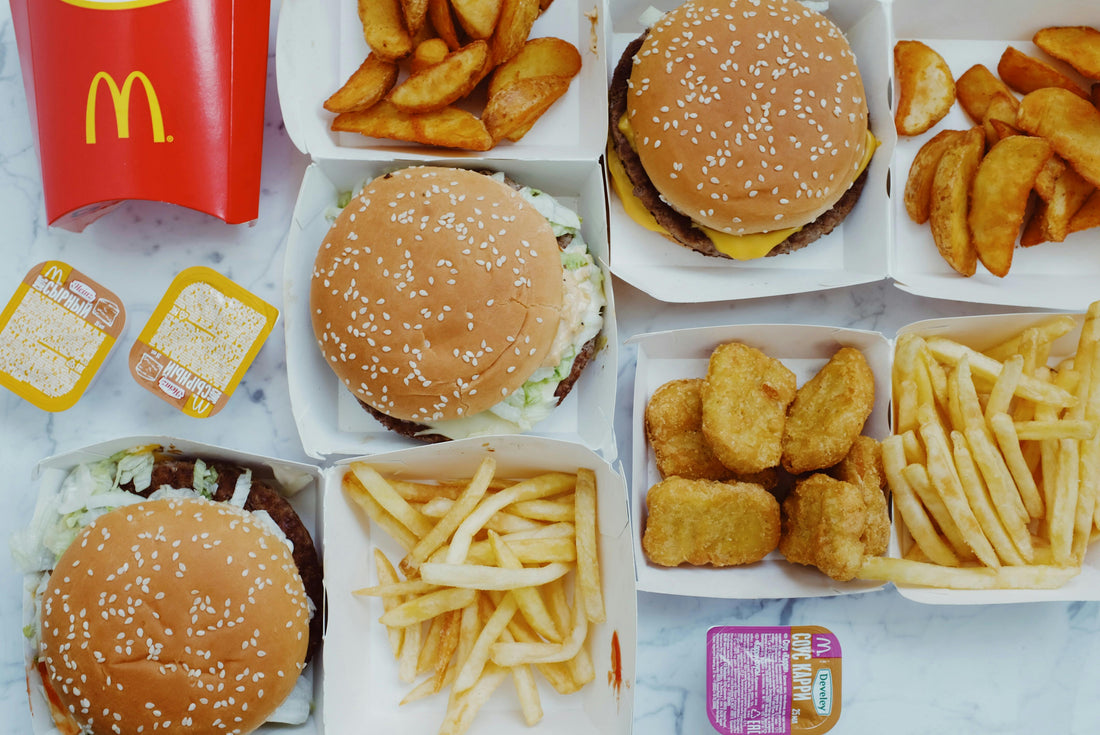
The Horrifying Truth About Fast Food
Share
Fast food has become a staple of modern life. It’s quick, cheap, and convenient — the perfect solution for busy schedules. But behind the flashy ads and dollar menus lies a much darker truth: most of what we call “fast food” isn’t even real food.
What’s Really in the Meat?
One of the biggest scandals that exposed the truth about fast food was Taco Bell’s “seasoned beef.” Back in 2011, it was revealed that their beef mixture contained only about 35% actual beef. The rest? Fillers, binders, preservatives, and additives — things like modified corn starch, soy lecithin, maltodextrin, and other processed ingredients.
The Role of GMOs and Seed Oils
Even if you look beyond the meat, fast food is still loaded with harmful ingredients. The buns, tortillas, and breadings are often made from genetically modified (GMO) grains, grown with pesticides like glyphosate that have been linked to health risks. Nearly every sauce, dressing, and fried item is made with cheap seed oils like soybean, canola, and corn oil.
Seed oils are heavily refined, stripped of nutrients, and linked to inflammation, metabolic issues, and heart disease. Studies show that consuming high amounts of omega-6 fatty acids (the type found in these oils) throws off the body’s omega balance, leading to chronic inflammation — a root cause of many modern diseases.
Additives, Preservatives, and “Flavor Science”
Fast food isn’t just about feeding people — it’s about hooking them. That’s why these foods are designed with a mix of MSG, artificial flavors, preservatives, and lab-engineered seasonings that light up the brain’s reward centers, making you crave more.
Fillers like soy protein, cellulose (yes, wood pulp), and chemical stabilizers allow companies to save money while keeping foods looking and tasting consistent. Preservatives like BHA, BHT, and sodium nitrite extend shelf life but are linked to cancer and other health problems.
In short, much of fast food isn’t food at all — it’s a science project.
The Cost to Your Health
While an occasional fast food meal might seem harmless, regular consumption has been tied to:
-
Obesity and weight gain
-
Insulin resistance and Type 2 diabetes
-
High blood pressure and cardiovascular disease
-
Liver stress and fatty liver disease
-
Hormonal imbalance and fertility problems
-
Brain fog, mood swings, and increased risk of depression
Fast food meals are calorie-dense, nutrient-poor, and loaded with chemicals your body doesn’t know how to handle. The long-term result is a body that’s overfed but undernourished.
Why It’s Not Worth It
Yes, fast food is convenient. But ask yourself: convenient for who? For you — or for the corporations making billions while cutting corners on your health?
These massive companies don’t care about nourishing your body. They care about marketing, cost-cutting, and hooking you on cheap food that leaves you wanting more. The truth is, that $5 combo meal comes at a much higher price — one that your body pays for years down the road.
Healthier Alternatives
The good news is, you don’t have to settle for fake food. Real, nourishing options are out there:
-
Cook simple meals at home with real, whole ingredients.
-
Choose grass-fed, organic meats and avoid ultra-processed deli or fast-food meats.
-
Cook with stable fats like butter, olive oil, or coconut oil instead of seed oils.
-
Invest in healthy snacks you can grab on the go (fruit, nuts, organic protein bars).
It may take a little extra time or planning, but nothing compares to the peace of mind of knowing exactly what’s in your food — and that it’s supporting your health instead of destroying it.
Final Thoughts
Fast food is designed for profit, not your health. From fake meat mixtures to GMO fillers, seed oils, and preservatives, it’s a cocktail of chemicals your body doesn’t need.
Your health is too valuable to trade away for cheap convenience. Choose real food, take back control of your plate, and invest in your future one meal at a time.
